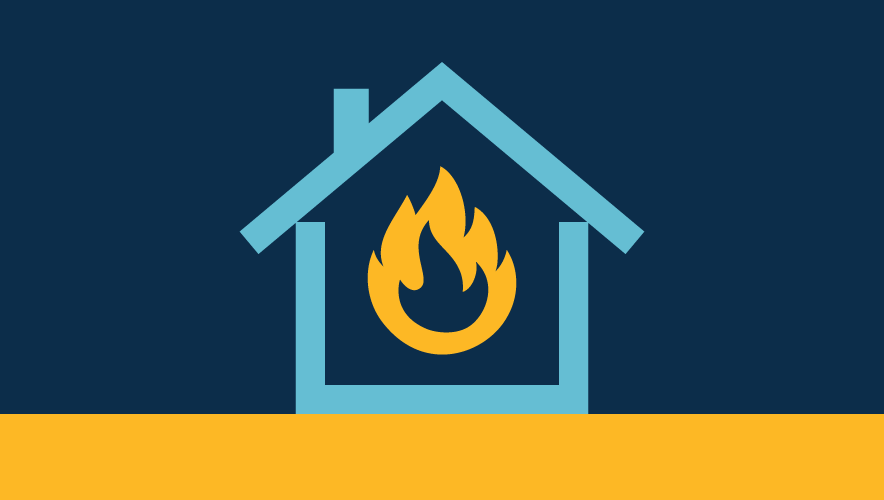Smart Sensor Reduces Fire Risk for Housing Authority in Historic City
Nestled in upstate New York, Saratoga Springs is famous for its thoroughbred horse racing track and home to more than 28,000. The Saratoga Springs Housing Authority (SSHA) was established in 1952 and has two primary locations in the community.
The SSHA provides safe housing for elderly families, people with disabilities, invidivuals on fixed incomes, and working families who are moving towards self-sufficiency. The staff is dedicated to meeting the needs of local families, while assisting the community by offering long-term goals for affordable housing. The SSHA is a pillar in the community and currently provides assisted housing for more than 500 families in the city of Saratoga Springs.
The Properties of SSHA
The first SSHA housing complex, Stonequist Apartments, was constructed in 1970 and is a 10-story high-rise located just blocks from downtown Saratoga Springs and the heart of the business district. The second one consists of two-family sites, Jefferson and Vanderbilt Terraces, which are located just a few blocks from the historic Saratoga Race Course.
In 2020, SSHA began the development of two new affordable housing projects. The Promenade is a 63-unit project comprised of a four-story building with one- and two-bedroom apartments behind the Stonequist Apartments and three townhouse style buildings comprised of one- , two- , and three-bedroom units which face West Circular Street.
The second project is called the SRDI Project and consists of two 12-unit buildings located within the grounds of the Terrace properties.
With 176 apartments located in Stonequist alone, it is important for the SSHA to keep residents safe from fire hazards. The U.S. Department of Housing and Urban Development (HUD) administers housing and urban development regulations to help accomplish this. A recent rule to further this effort is HUD’s Rule RIN 2577-AC97, which requires each public housing authority (PHA) to implement a smokefree policy that prohibits the use of “prohibited tobacco products” in all public housing living units, indoor common areas in public housing, and in PHA administrative office buildings.
The SSHA had experience with this due to an incident where a resident fell asleep while smoking, ultimately starting a fire at one of its properties. To enforce the HUD rule—and remain compliant—it began looking for a way to catch violators quickly and efficiently. The SSHA knew it had to find a fire safety solution to mitigate any further risks to residents and the community.
Installing HALO
With a strict no smoking policy in place throughout its various communities, it was important that the SSHA had a way to enforce the policy while staying compliant with the HUD non-smoking mandate.
After doing its due diligence, SSHA discovered and decided to purchase a smoking/vaping sensor solution from IPVideo Corporation, a New York-based security company that develops unique event driven artificial intelligence (AI) security and safety solutions. These solutions utilize video, audio, and sensor technology to effectively mitigate false positives, confirm incidents, accelerate response, and deliver long term actionable intelligence.
The sensor, the HALO IoT Smart Sensor, can be used to detect vaping, smoke, and tetrahydrocannabinol (THC), which is present in marijuana. The sensor solution will send text or email alerts, or third-party integration alerts, if it detects one of the prohibited substances. Users also have the option to connect to HALO Cloud, an online dashboard where they can manage multiple devices, receive real-time alerts, and review historical alerts and data to document their building’s health status.
This has now given the industry an easy way to enforce non-smoking policies.
A big challenge for the housing industry, for instance, is accusing a resident of smoking without concrete proof. Having the ability to get alerts and notifications from the sensor allows the housing authority to talk to the person smoking and try to deter him or her from doing it again.
“The HALO IoT smart sensor is a real game changer for the public housing industry,” says Paul Feldman, executive director at SSHA. “This has now given the industry an easy way to enforce non-smoking policies and provide proof of who is not following the rules and smoking on premises.”
Complying with the HUD Mandate
SSHA has recently installed the HALO sensors in some units and as of press time has already received multiple alerts for six different apartments. This has allowed SSHA staff to take control and remain compliant with the HUD rule by addressing smoking and vaping on premise.
The need for security while maintaining individual privacy is in high demand.
HALO gave staff members the ability to deal with the problem directly by speaking to individuals who were breaking the rules and convince them to stop smoking and vaping inside their units. Without the sensor device, there was no way for the management team to have proof of the culprits and mitigate fire risks.
“The need for security while maintaining individual privacy is in high demand,” explains David Antar, president at IPVideo Corporation. “We are happy to help the housing authority industry stay compliant with non-smoking mandates and create a safer environment for residents and staff.”
After the success of the initial installation, SSHA plans to continue to implement HALO devices throughout its properties. “It’s like having an expert witness on the stand in a courtroom,” Feldman says.
Monique Merhige, president, Infusion Direct Marketing, Inc., has been working in the security industry for more than 20 years and specializes in public relations and media planning.
© 2023 Monique Merhige













